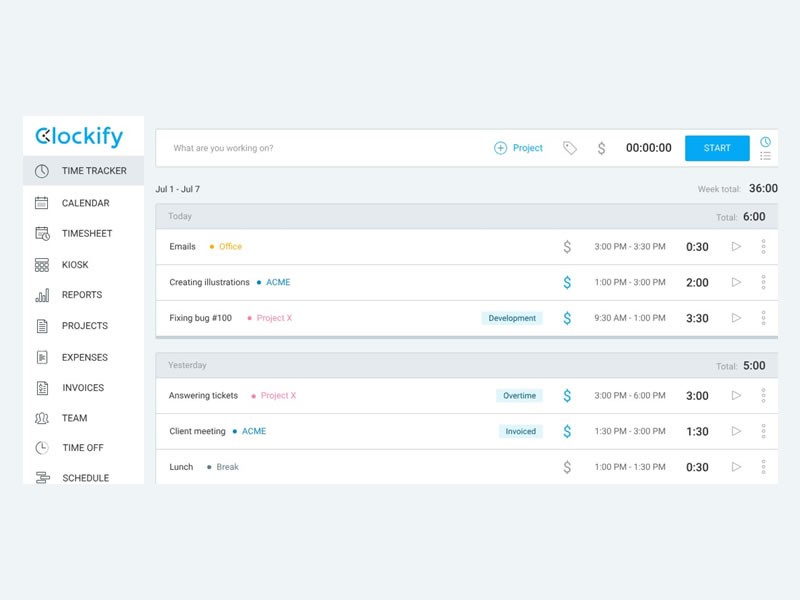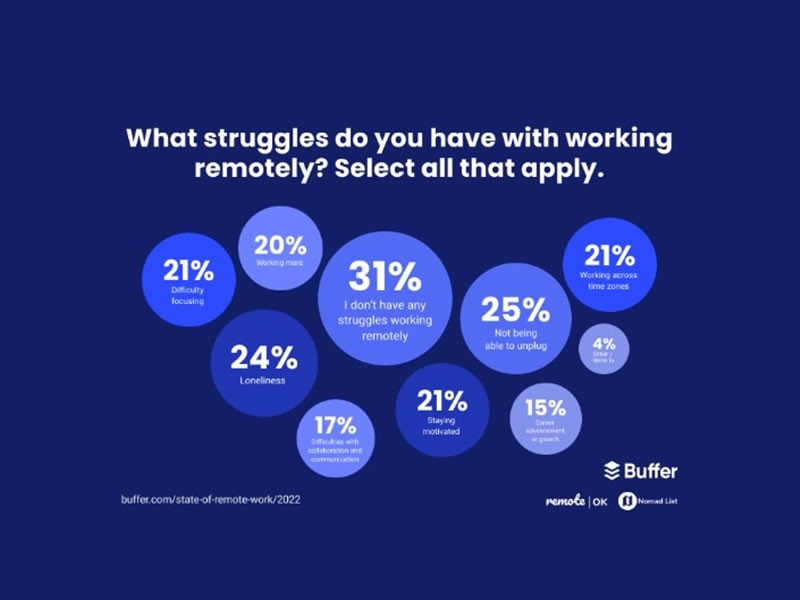Insight Blog
Agility’s perspectives on transforming the employee's experience throughout remote transformation using connected enterprise tools.
10 minutes reading time
(1989 words)
Improve Remote Team Productivity: 7 Tips and Examples
Looking for tips to improve remote team productivity? Here are 7 expert tips to foster efficient collaboration and communication in your virtual workspace.
Recent research has sought to address inquiries about the productivity of remote work, yielding mixed results.
According to a report, remote workers in the US were 22% more likely to perceive productivity in their roles than their on-site counterparts.
However, these remote workers logged an extra 1.4 days per month compared to on-site workers, elevating the risk of burnout.
The question of whether remote work enhances productivity is intricate, with the answer contingent on the individual and the nature of the job.
COVID-19 created a sudden shift for businesses and workers to adapt to new ways of operating.
As lockdown measures necessitated social distancing, a large percentage of employees were forced to work remotely.
Working remotely, just like any transformative shift, has its own fair share of challenges, particularly in maintaining optimal productivity.
But remote work is here to stay.
Therefore, businesses have to find a way to streamline and improve remote team productivity.
To help you, we've done research and come up with tips to improve your remote team's productivity.
This article explores the impact of working from home on productivity, examining the numerous advantages and disadvantages involved.
Working From Home vs Remote Work
The terminologies "working from home," "remote work," and "flexible working" are often used interchangeably, but they encompass distinct concepts within the realm of flexible work arrangements.
Let's delve into each model to understand their nuances and emerging trends.
Remote Work
Remote work refers to the practice of working from a location outside the confines of a traditional office. This may involve working from home, but it can extend to other settings such as coworking spaces, coffee shops, or even outdoor environments like beaches. While working from home falls under the umbrella of remote work, it's important to note that remote work encompasses a broader range of locations.
Research from Upwork underscores the increasing prevalence of remote work, projecting that approximately 36 million Americans will adopt this work style by 2025.
- Remote Work: Remote work entails operating from a location outside a conventional office, which could include home, a coffee shop, a coworking space, or any place with an internet connection. It is gaining popularity due to its benefits such as location flexibility, the elimination of commuting, and the promotion of a healthier work-life balance.
- Working from Home: Working from home is a subset of remote work focused specifically on working from one's residence. It is the most prevalent form of remote work and is often adopted by those requiring set hours or specific equipment that may not be available elsewhere.
- Hybrid Work: Hybrid work combines both remote and in-office work. Employees following a hybrid model divide their time between working from home and working in the office. This approach is favored by companies aiming to provide remote flexibility while retaining the advantages of in-person collaboration and communication.
- Flex Work: Flex work represents a more adaptable form of remote work, granting employees the autonomy to establish their own work hours and choose their work location. It is commonly adopted by individuals with demanding personal schedules or those who frequently travel for work.
- Decentralized Work: Decentralized work takes a radical approach by completely dismantling the traditional office. In this model, employees operate from various physical and virtual locations, fostering a more distributed and collaborative work environment.
As the landscape of work continues to evolve, understanding these diverse remote working styles is essential for individuals and organizations seeking to navigate the complexities of modern work arrangements.
Each style offers unique advantages and caters to different preferences and needs, contributing to a more inclusive and adaptable work culture.
Working From Home
Embracing the remote work model signifies a departure from the traditional notion of commuting to a centralized office space.
In this contemporary approach, employees have the flexibility to carry out their professional responsibilities from the comfort of their homes, breaking free from the constraints of a physical workplace.
This dynamic paradigm shift in work arrangements is not limited to a specific timeframe; rather, it encompasses both full-time and part-time arrangements.
As organizations worldwide adapt to this transformative model, the impact on work culture, communication dynamics, and productivity becomes increasingly significant.
The statistics from the US Census Bureau shed light on the substantial growth of remote work between 2019 and 2021. Over this two-year span, there was a remarkable threefold increase in the number of individuals predominantly working from home.
The figures surged from 5.7% (approximately 9 million people) to an impressive 17.9% (equivalent to 27.6 million people).
This surge not only reflects a response to the unprecedented challenges posed by global events but also underscores a broader and enduring shift in how work is conceptualized.
Understanding the magnitude of this shift is crucial for businesses and policymakers alike, as it necessitates a reevaluation of organizational structures, the implementation of robust remote management strategies, and the fostering of a supportive environment that empowers employees to thrive in this evolving professional landscape.
What are the Top Stats and Trends in Remote Work?
7 Tips to Improve Remote Team Productivity
Working remotely offers many benefits, providing flexibility and autonomy.
However, maintaining and boosting team productivity in dispersed settings poses unique challenges.
That's why it's crucial to follow the right tactics that can elevate your productivity levels. For example, as mentioned in this GovDocFiling article, you should follow a step-by-step process to register your real estate business without any hiccups. The same applies to productivity.
So, here are 7 practical tips to boost your team's productivity. They'll offer practical insights to enhance collaboration, communication, and overall effectiveness in virtual workspaces.
1. Establish Clear Communication Channels
Clear communication channels are essential for remote team productivity.
Establishing transparent employee communication ensures that team members can easily share updates, ask questions, and collaborate seamlessly.
When setting communication channels, consider the following:
- What communication methods does your remote team prefer? (Emails, chats, video?)
- When are the preferred meeting times, considering time zones and specific days?
- Define expected turnaround times for communication.
The answers will help you implement the tools that streamline your team's communication.
For example, you can utilize video calls in complex discussions such as meetings. For swift collaboration, you can leverage tools like Slack for efficient communication.
So, how can establishing clear communication channels improve remote team productivity?
- Facilitates seamless information exchange.
- Reduces the risk of misunderstandings.
- Fosters a sense of connection among remote team members.
- Enables real-time discussions and collaboration.
- Prevents information silos and promotes accountability.
2. Utilize Client Portal Software
Utilizing a client portal is another tip to improve remote team productivity.
The client portal software ensures seamless collaboration by centralizing communication and document sharing. With a dedicated space for client interactions, teams can easily access project details, updates, and files, reducing time spent searching through emails.
So, how does a client portal boost productivity:
- Centralizes communication and document sharing.
- Reduces email clutter and search time.
- Enhances organization and efficiency.
- Promotes secure collaboration.
- Streamlines remote team workflows.
Follow us and access great exclusive content everyday: Follow us on Google News
3. Set Clear Expectations
Establishing precise expectations is integral for optimizing remote employee productivity.
Clearly delineating roles, responsibilities, and project requirements ensures each team member comprehends their unique contributions, cultivating a sense of accountability and diminishing the likelihood of miscommunication or duplicated efforts.
For instance, if your expectation includes specific daily project hours, consider employing a time-tracking tool like Clockify for seamless monitoring and streamlined management.
This not only facilitates clarity in individual and team progress but also ensures alignment with project timelines. The meticulous communication of expectations is foundational for a cohesive and productive remote work setting.
4. Encourage Skill Development
Encouraging skill development within remote teams is instrumental in maintaining a competitive edge and fostering professional growth.
By supporting continuous learning initiatives, such as training programs, workshops, and providing access to relevant online course platforms, teams can stay abreast of industry trends and advancements.
For instance, investing in soft skills, like effective communication or leadership, can significantly impact team dynamics and collaboration.
This not only enhances individual competencies but also contributes to the collective expertise of the team.
Remote work environments often benefit from adaptable and multi-skilled professionals who can navigate dynamic challenges.
Investing in skill development demonstrates a commitment to employee growth and job satisfaction, leading to increased motivation and productivity.
Additionally, it cultivates a culture of innovation, where team members are empowered to bring fresh insights and capabilities to their roles, creating a more resilient and forward-thinking remote team.
You may also like: Best Apps for Employees: UPDATED 2022 – A Complete Guide
5. Provide Employee Feedback
Providing employee feedback is another tip to improve remote team productivity for individual growth and team success.
Regular, constructive feedback serves as a guide for improvement, acknowledging achievements and addressing areas for development.
It creates a feedback loop that aids in aligning individual contributions with overarching goals.
Regular feedback sessions can highlight strengths, boost employee morale, and also offer valuable insights for professional development.
It's an opportunity to celebrate accomplishments, reinforcing positive behaviors. Constructive criticism, when communicated effectively, encourages continuous improvement.
Here are some tips for giving effective feedback to employees working remotely
- Be specific and objective in your feedback.
- Balance positive reinforcement with constructive criticism.
- Schedule regular feedback sessions to maintain communication.
- Utilize video calls for a more personal touch.
- Focus on behaviors and outcomes, not personality.
- Provide actionable suggestions for improvement.
- Acknowledge and celebrate achievements.
- Encourage open dialogue and questions.
- Be mindful of cultural differences in communication.
- Use a supportive and empathetic tone.
- Recognize individual contributions to team goals.
- Use collaboration tools for real-time feedback.
6. Promote Team Building Activities
According to recent research by Buffer, 24% of remote workers struggle with loneliness, as the absence of physical interactions can lead to a sense of isolation.
Promoting team-building activities is vital to address this issue, fostering a sense of connection and camaraderie among team members.
These activities transcend work-related tasks, providing opportunities for informal interactions.
Team-building initiatives allow employees to socialize in a relaxed setting, building rapport and trust. It contributes to a positive team culture, boosting morale and mitigating feelings of isolation.
Creating a virtual environment that encourages team cohesion not only enhances job satisfaction but also positively impacts overall remote team productivity.
Here are some ideas for team building:
- Online games
- Online fitness challenges
- Employee get-togethers
- Mindfulness and meditation sessions
- Book club
- Movie night
- Milestone celebrations.
Free ebook: How To Get Your Intranet Off The Ground
7. Foster a Culture of Trust
Fostering a culture of trust is foundational for a healthy work environment.
It involves creating a workplace where team members feel secure, supported, and confident in their interactions. Workers should be able to interact freely with their seniors or anyone else during work or on social media.
This culture promotes open communication, transparency, and collaboration, which builds trust on social media and in remote working spaces. One of the most effective strategies for businesses to cultivate customer loyalty and engage users is by embed Instagram Reels on their website.
Here are some tips to help foster a culture of trust:
- Transparent communication builds trust.
- Encourage open dialogue and feedback.
- Demonstrate reliability in commitments.
- Acknowledge and appreciate achievements consistently.
Wrapping up
Optimizing remote team productivity is achievable with the right strategies.
Here's a recap of the key takeaways:
- Establish clear communication channels.
- Set clear expectations for roles and tasks.
- Utilize client portal software for efficient collaboration.
- Promote team-building activities for camaraderie.
- Encourage continuous skill development.
- Provide regular feedback for growth.
- Foster a culture of trust.
These tips to improve remote productivity will create a collaborative and efficient remote work environment, hence boosting company returns.
Categories
Blog
(2586)
Business Management
(318)
Employee Engagement
(204)
Digital Transformation
(172)
Intranets
(119)
Growth
(117)
Remote Work
(61)
Sales
(48)
Collaboration
(37)
Culture
(29)
Project management
(29)
Customer Experience
(26)
Knowledge Management
(21)
Leadership
(20)
Comparisons
(5)
Ready to learn more? 👍
One platform to optimize, manage and track all of your teams. Your new digital workplace is a click away. 🚀
Free for 14 days, no credit card required.
















